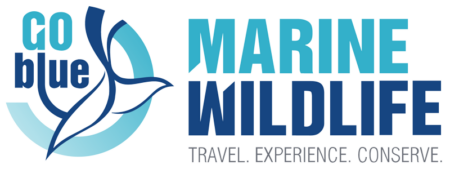This illustration shows how fishing lines attached to traps and buoys on the ocean floor present a potentially deadly hazard to North Atlantic right whales. Freeing entangled whales involves a certain amount of knowledge and caution, and should be left to the experts.
 What started out as a routine day of fishing for a well-intentioned New Zealand man quickly turned to tragedy when he attempted to save an entangled humpback whale off New Zealand’s coast. As reported in a June 2003 issue of the New Zealand Herald, Tom Smith arrived on the scene after picking up reports from local fishermen of a whale in trouble. He leapt into the water and tried to cut the roped whale free. Inadvertently, the whale’s fluke came down on Smith, killing him.
What started out as a routine day of fishing for a well-intentioned New Zealand man quickly turned to tragedy when he attempted to save an entangled humpback whale off New Zealand’s coast. As reported in a June 2003 issue of the New Zealand Herald, Tom Smith arrived on the scene after picking up reports from local fishermen of a whale in trouble. He leapt into the water and tried to cut the roped whale free. Inadvertently, the whale’s fluke came down on Smith, killing him.
For Ed Lyman, a whale rescue expert with Hawaiian Islands Humpback Whale National Marine Sanctuary who gives workshops on the subject, the New Zealand tragedy is precisely what he wants people to avoid. “Smith’s enthusiasm to do something good ended badly,” Lyman says.
The first thing Lyman and other marine mammal rescue specialists tell people is don’t get into the water. “The desire for untrained people to act on their own can often have dangerous results,” he says. “Would-be rescuers can injure themselves and also injure a whale by using improper equipment or techniques.”
Dr. Terri Rowles, director of NOAA Fisheries Marine Mammal Health and Stranding Response Program, the federal agency that authorizes and oversees all marine mammal rescues in the U.S., concurs with Lyman. “For both the animals’ welfare, as well as human safety, it is important that only specially permitted and trained people working under the authority of the NOAA stranding and response program cut gear and marine debris from a whale.”
 Rowles emphasized that “the public should never attempt to disentangle a marine mammal, whether from a vessel or in the water, because the activity is inherently dangerous to both the animals and the people trying to save them.”
Rowles emphasized that “the public should never attempt to disentangle a marine mammal, whether from a vessel or in the water, because the activity is inherently dangerous to both the animals and the people trying to save them.”
Marine mammals getting caught in fishing gear and debris is a growing problem for state and federal agencies, along with private groups dedicated to protecting these animals. Each year, thousands of whales and dolphins die from the gear, indicating that fisheries by-catch is a significant human-related cause of cetacean mortality.
David Mattila, the research and rescue coordinator for the Hawaiian Islands Humpback Whale sanctuary, has spent the last 25 years cutting large whales free. He stressed the importance of leaving the rescue work to the specialists by highlighting some of the hi-tech equipment available to them.
One of the pieces of equipment that we use to help us free these animals is transmitters,” Mattila says. “Attaching transmitters to the gear ensnaring the whale allows the rescue team the ability to track the animal until proper resources and trained personnel have been assembled, and conditions are favorable to safely cut the whale free.”
In Alaska, the sanctuary program and NOAA Fisheries’ local Protected Resources Division tagged a humpback entangled in gillnet. The transmitter allowed the team to work on the animal on two different occasions, and free it nine days later. This was the first time transmitters were used to aid in whale disentanglement efforts in Alaska.
[youtube=http://youtu.be/L7GtnD4d66k/]
Local company Marine Dynamic’s owner Wilfred Chivell is part of the SA Whale Disentanglement Network, led by Oceans & Coasts, and is specially trained and equipped to handle entangled whales and dolphins. Where whales or dolphins are stranded in the area, Chivell and one of the biologists will attend to do sampling and measurement for the Mammal Research Institute of the University of Pretoria and O&C.
Extensive effort has also gone into developing and testing unique and specialized cutting tools that can help remove the gear safely and without causing additional harm to the whales.








